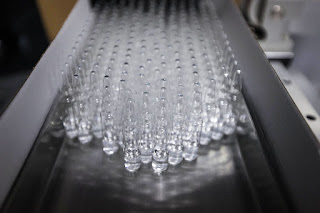After banning them for more than a year, in-person family visits to the prisons have started in the UK this week. Prisons around the world are susceptible to outbreaks. They are crowded, with poor ventilation, inadequate healthcare, low hygiene. Even in developed nations; gym sessions and prison jobs have been suspended. The result is a 23-hour cell lockdown for most inmates. In many countries, prisoners were not allowed to take showers for weeks. Infected patients moved to isolation cells had to beg for medicines and hydration. In the USA alone, there have been 660,000 cases and 3,000 deaths in prisons so far.
In Delhi, certain prisons allowed in-person visits in
October, after a gap of more than six months. Prisoners asked their families for
a fresh set of clothes. Their clothes were worn and torn. As per covid regulations,
fresh clothes had to be soaked in soap water for an hour before they could be worn
for the first time.
Indian prisons have jail phones that can be used for a
few minutes every month to contact the family. Strangely, in many Indian
states, women prisoners are not allowed to use the phone, reportedly because it
is installed in the male section.
From 11 February, Bombay’s Arthur Road jail allows two
visitors (instead of five pre-covid). Those below 15 or above 55 are prohibited
from visiting the jail.
*****
The in-person visits after a year create anxiety and awkward
interactions. Children are older by a year. California will allow visits from
10 April. Michelle Tran plans to visit her husband for the first time after 8
March 2020. She needs to see that her husband is still real, she says. She
needs to see his face.
Lamont Heard, 43, has struggled with his mental health
because he hasn’t seen his family. “I’m not evolving.” He said in an email. “Having
the feelings of being ignored, rejected, left out and cut off. It makes me feel
like I’m by myself, and I go into a deep depression. But a visit takes all of
that away.”
*****
UK has 312,000 children with a parent in prison. A
study has shown they are at an increased risk of future crime, mental health
issues and poor educational achievements.
Most prisons in the world don’t allow cell phones, wifi,
or internet access. This is hard to believe, because we take these things for
granted. The in-person visits and the jail phone communication happen strictly
under supervision.
*****
Against this backdrop UK’s “Purple Visits”
rollout started by the Ministry of Justice is commendable. This is a video
calling software exclusively for the prison population. (Zoom and Skype are not
allowed inside prisons, since in theory prisoners could communicate with the
world outside).
This month, an English reporter was allowed to interview
Al, a prisoner since 2013, on Purple Visits. They chatted for the allowed
thirty minutes.
Al said this year was the first time he saw his dog in
seven years. His wife and two children could visit him every two weeks before
lockdown, but never his dog. The family has shifted since Al went behind bars. On
the video call, his children showed him around the house, their bedrooms, the
posters, everything. All that couldn’t replace hugs, but it was still a bonus.
Al’s prison is pragmatic. Though two purple visits a month is the official maximum,
he is allowed three or four, if there is a free space.
At the moment the UK government pays for the video
calls. Post-covid, Al feels prisoners will have to pay something like five pounds.
Anyway, his family spends more in travelling to the prison to meet him. The Purple
Visits currently make the best of a bad situation. In future, ideally, Al would
like to have four visits a month – two in-person and two Purple. That way he
can see the environment in which his family lives.
Prisoner family support groups had been urging the UK
government to invest in video call technology for years. Finally, the pandemic
made it happen.
Ravi










